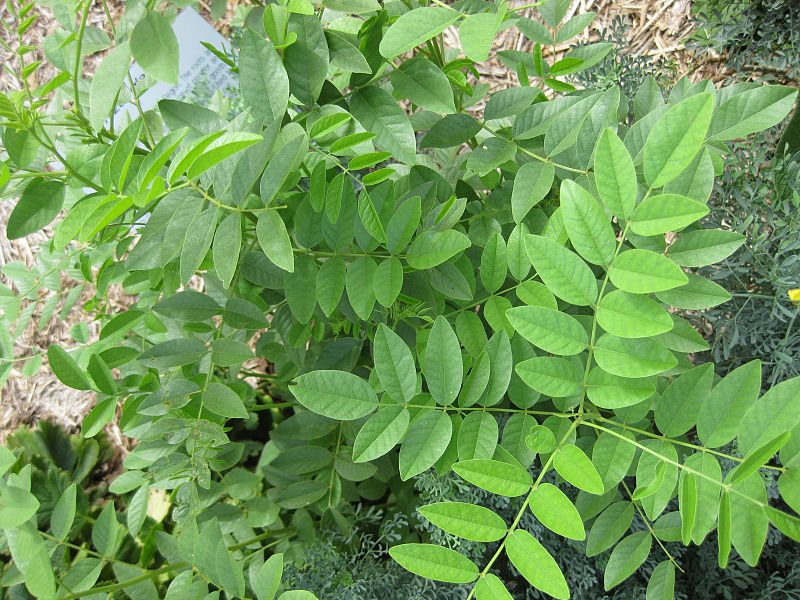Nutrition
Like nearly every other plant on Earth, Glycyrrhiza glabra acquires energy by a process known as photosynthesis. This process involves the absorption of water, carbon dioxide and light energy in order to produce adenosine triphosphate (ATP) in the form of glucose (C6H12O6) with the byproduct of atmospheric oxygen. This can be shown in the following equation;
.png)
.png)
Let's go over the steps in more detail
1.) Absorption of Carbon Dioxide
.png)
It is well known that a fairly major component of the atmosphere is carbon dioxide. This can be taken in through structures located on the plant known as stoma. The plant can open and close these stoma based on the amount of water present in the guard cells which neighbor the stoma. Because stoma are openings in the plant, depending on the amount of sun exposure the plant may have them closed during the day to avoid water loss. An example of a stoma is shown to the right. The guard cells are the glowing cells with the orange circles in them and the actual stoma is found in between them.
2.) Absorption of light energy
.jpeg)
This is made possible because of structures located within the leaves of the plant. These structures, known as chloroplasts, are filled with a green pigment known as chlorophyll. This pigment absorbs the light energy and transports it to where it used to made glucose in the cells. In the cells to the right you are able to see the chlorophyll.
3.) Absorption of water
Water acquisition is an essential part of the plant life cycle. This is carried out with the help of the roots found at the bottom of the plant. Glycyrrhiza glabra grows roots that can reach up to 6 ft in length, allowing it to reach deep into the soil to find water. The water is then absorbed into the roots via diffusion and transported through out the plant using xylem (pictured at the bottom of this page). Wait...how does the water move up the plant against gravity? This process is made possible because of these processes;
Tension- surface tension of the water
Adhesion- 'stickiness' of water to polar molecules
Cohesion- 'stickiness' of water to itself
Transpiration- loss of water through the stoma of the leaves
If you have ever spent time watching water you have probably noticed that water will move from a high concentration to a low concentration. In the roots there is a high concentration of water due to the amount of water coming into the plant, and water is being lost from the stoma of the leaves towards the top of the plant. This means that water will want to move up the plant towards the water deficient leaves where it is required to carry out photosynthesis.
4.) Production of sugar
This process is carried out through the process known as the Calvin cycle. This process follows the light dependant reactions where water is used to produce smaller amounts of ATP and atmospheric oxygen is released. Plants like Glycyrrhiza glabra use the Calvin cycle in order to produce larger amounts of ATP.
.png)
5.) Transportation of sugar
This process is made possible due to the phloem found within the plant. The phloem is responsible for moving the sugars throughout all parts of the plant in the direction of source to sink. An example of a source is the leaves or even a source stored in the roots (potato for example). A sink is anything that requires energy to live (everything). This requires the use of active transport from the plant, which uses up some ATP.
Here is an example of what the inside of a stem may look like.
.png)
1.Pith 4.Phloem 7.Epidermis
2.Protoxylem 5.Sclerenchyma
3.Xylem 6.Cortex
Who would have that so much went into just keeping a plant alive? Amazing isn't it?
Top of Page
Home
